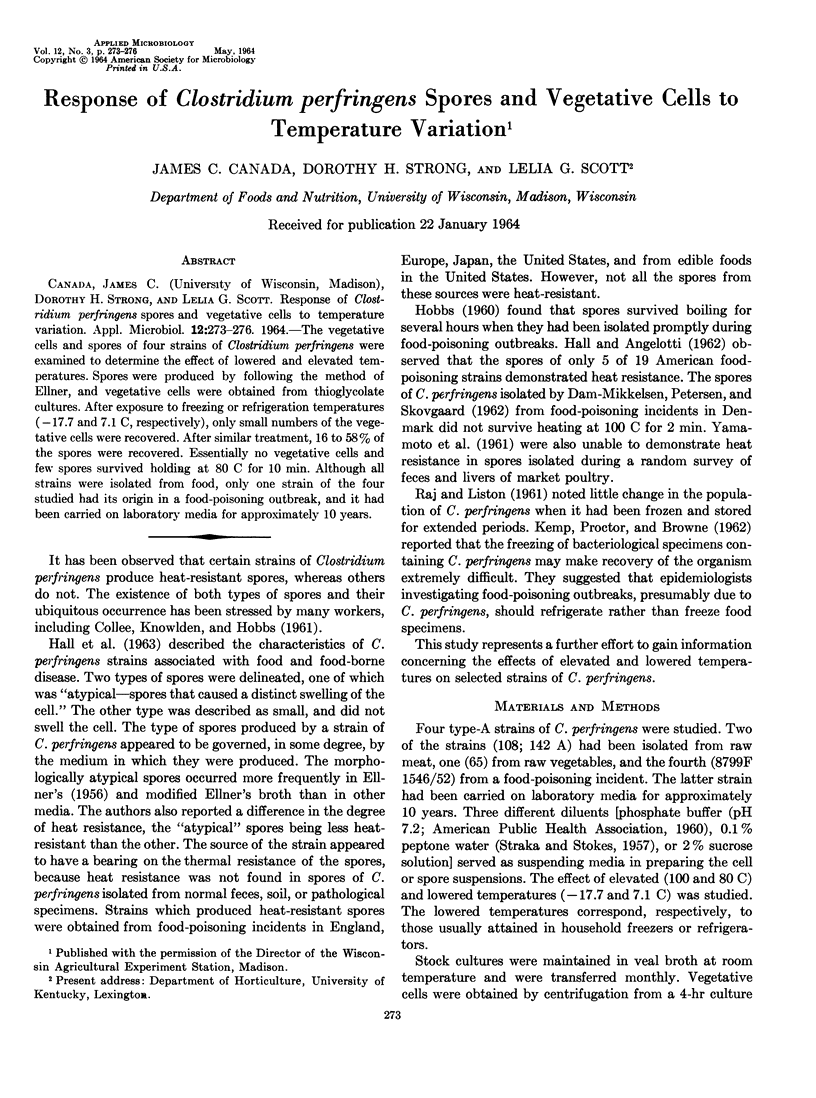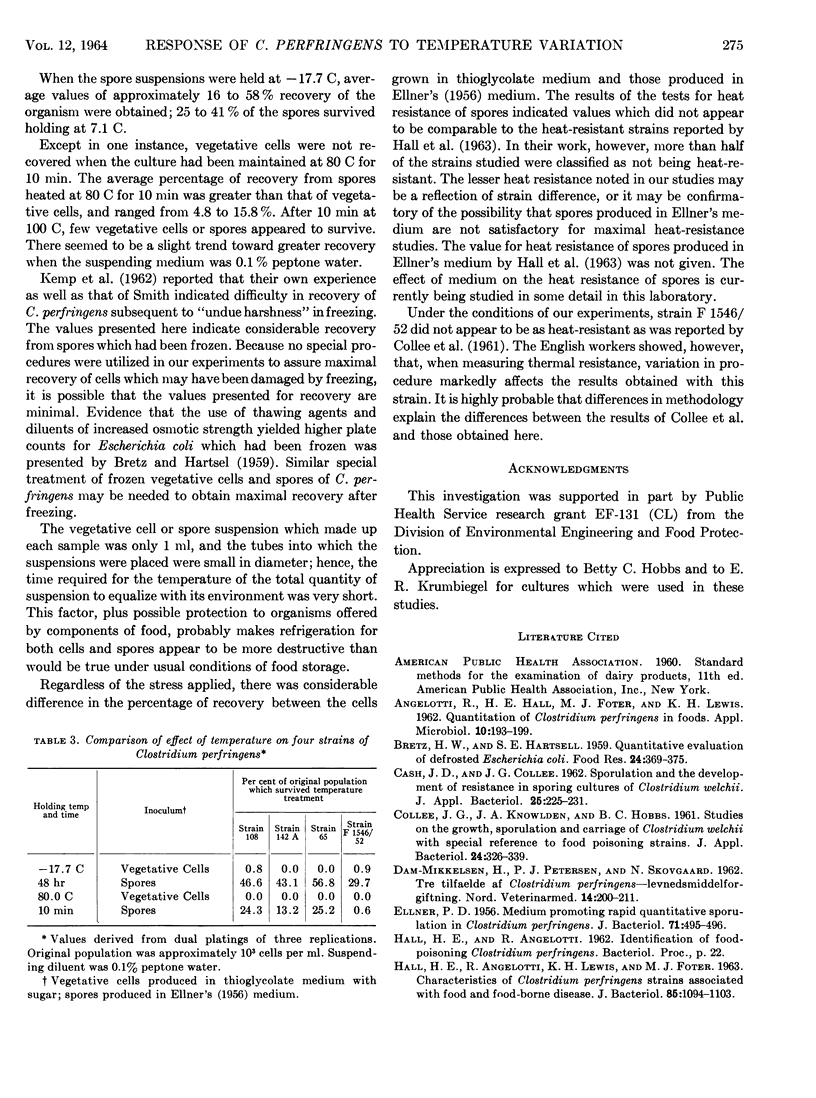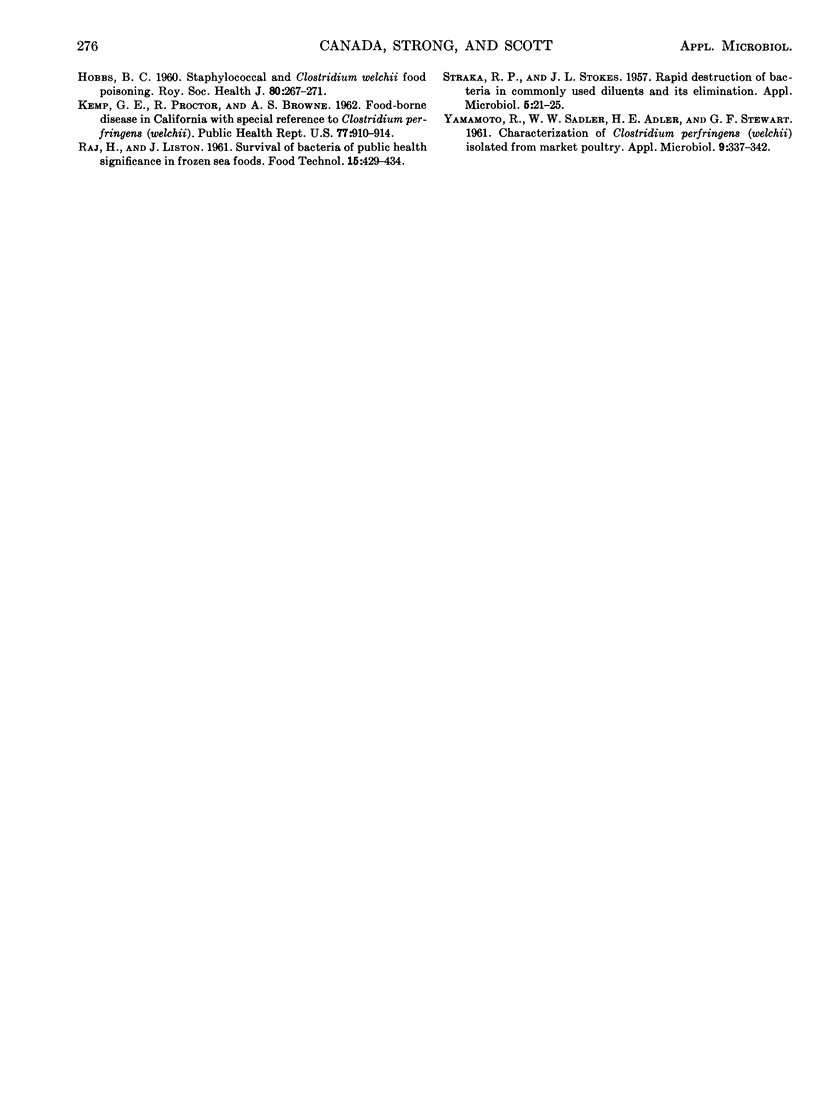Abstract
The vegetative cells and spores of four strains of Clostridium perfringens were examined to determine the effect of lowered and elevated temperatures. Spores were produced by following the method of Ellner, and vegetative cells were obtained from thioglycolate cultures. After exposure to freezing or refrigeration temperatures (-17.7 and 7.1 C, respectively), only small numbers of the vegetative cells were recovered. After similar treatment, 16 to 58% of the spores were recovered. Essentially no vegetative cells and few spores survived holding at 80 C for 10 min. Although all strains were isolated from food, only one strain of the four studied had its origin in a food-poisoning outbreak, and it had been carried on laboratory media for approximately 10 years.
Full text
PDF



Selected References
These references are in PubMed. This may not be the complete list of references from this article.
- ANGELOTTI R., HALL H. E., FOTER M. J., LEWIS K. H. Quantitation of Clostridium perfringens in foods. Appl Microbiol. 1962 May;10:193–199. doi: 10.1128/am.10.3.193-199.1962. [DOI] [PMC free article] [PubMed] [Google Scholar]
- ELLNER P. D. A medium promoting rapid quantitative sporulation in Clostridium perfringens. J Bacteriol. 1956 Apr;71(4):495–496. doi: 10.1128/jb.71.4.495-496.1956. [DOI] [PMC free article] [PubMed] [Google Scholar]
- HALL H. E., ANGELOTTI R., LEWIS K. H., FOTER M. J. CHARACTERISTICS OF CLOSTRIDIUM PERFRINGENS STRAINS ASSOCIATED WITH FOOD AND FOOD-BORNE DISEASE. J Bacteriol. 1963 May;85:1094–1103. doi: 10.1128/jb.85.5.1094-1103.1963. [DOI] [PMC free article] [PubMed] [Google Scholar]
- HOBBS B. C. Staphylococcal and Clostridium welchii food poisoning. R Soc Health J. 1960 Jul-Aug;80:267–272. doi: 10.1177/146642406008000422. [DOI] [PubMed] [Google Scholar]
- KEMP G. E., PROCTOR R., BROWNE A. S. Foodborne disease in California with special reference to Clostridium perfringens (welchii). Public Health Rep. 1962 Oct;77:910–914. [PMC free article] [PubMed] [Google Scholar]
- STRAKA R. P., STOKES J. L. Rapid destruction of bacteria in commonly used diluents and its elimination. Appl Microbiol. 1957 Jan;5(1):21–25. doi: 10.1128/am.5.1.21-25.1957. [DOI] [PMC free article] [PubMed] [Google Scholar]
- YAMAMOTO R., SADLER W. W., ADLER H. E., STEWART G. F. Characterization of Clostridium perfringens (welchii) isolated from market poultry. Appl Microbiol. 1961 Jul;9:337–342. doi: 10.1128/am.9.4.337-342.1961. [DOI] [PMC free article] [PubMed] [Google Scholar]


